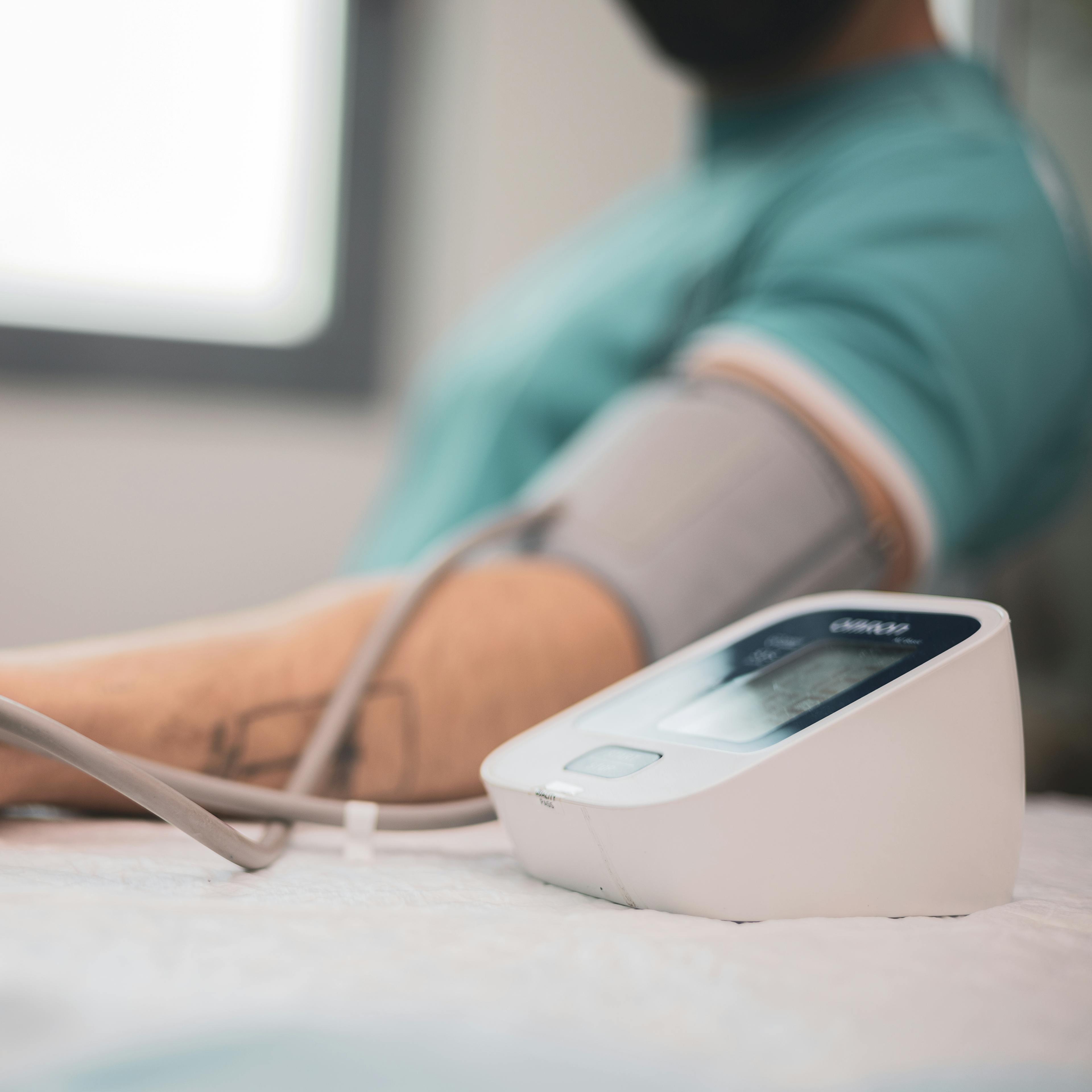A sore throat can be a minor annoyance or a sign of a more serious condition like strep throat. Are you feeling a slight tickle that won’t go away? Or is your throat feeling like you swallowed sandpaper?
From a pesky irritation to a painful predicament, sore throats come in different intensities. But how do you know if it’s just a common sore throat or something that needs medical attention, like strep? In this guide, we’ll cover symptoms, causes, testing, and treatment options to help you make informed decisions about your care.
What is Pharyngitis (Sore Throat)?
Pharyngitis, commonly known as a sore throat, is an inflammation of the pharynx, the area at the back of the throat. This condition can cause discomfort, pain, and difficulty swallowing.
Viral vs Bacterial Sore Throat
Your sore throat could be caused by either a virus or bacteria. Viruses are responsible for 85% to 95% of sore throats in adults, 70% in children aged 5 to 16, and 95% in children younger than 5 years.
Viral sore throats are more common and usually get better on their own within a week. Bacterial sore throats, like strep throat, need antibiotic treatment to prevent complications and reduce the risk of spreading the infection to others.
Sore Throat Causes
Several factors can lead to that scratchy, painful feeling in your throat:
- Viral infections (common cold, flu, COVID-19)
- Bacterial infections (strep throat)
- Allergies
- Dry air or smoke exposure
- Acid reflux
- Overuse of voice
- Postnasal drip
Sore throats are more common during fall and winter months, coinciding with flu and cold season. This seasonality can sometimes make it tricky to pinpoint the exact cause of your throat soreness.
Strep Throat vs Sore Throat: When to See a Doctor for a Sore Throat
While most sore throats are harmless and get better on their own, some symptoms suggest you should see a healthcare professional. We recommend seeking care if you experience:
- A sore throat that’s getting worse after 2 to 3 days
- Severe throat pain
- Difficulty swallowing or breathing
- Swelling in neck or jaw
- Fever over 101°F (38.3°C)
- Swollen lymph nodes in the neck
- White patches on the tonsils
- Blood in phlegm
- Any type of rash
- Feeling dehydrated
Strep Throat Symptoms
Strep throat is caused by a type of bacteria called group A Streptococcus. If you have strep throat, you might experience:
- Sudden onset of severe sore throat
- Pain when swallowing
- Fever of 101°F (38.3°C) or higher
- Swollen, tender lymph nodes in the neck
- Red, swollen tonsils, sometimes with white patches or streaks of pus
- Tiny red spots on the roof of the mouth (petechiae)
- Headache
- Nausea or vomiting, especially in children
Strep throat symptoms can differ between adults and children. Adults may experience milder symptoms, while children might have additional symptoms such as abdominal pain or a skin rash.
Strep Throat Testing
If strep throat is suspected, your healthcare provider will likely perform one or both of the following tests:
- Rapid antigen test: This quick test involves swabbing the throat and can provide results within minutes. While highly accurate when positive, it may sometimes miss infections.
- Throat culture: If the rapid test is negative but strep is still suspected, a throat culture may be performed. Throat cultures take 48 hours for results but is more accurate.
These tests help ensure accurate diagnosis and appropriate treatment, preventing unnecessary antibiotic use and potential complications such as:
- A peritonsillar abscess: a pus-filled infection near the tonsils that sometimes needs to be drained.
- A blood infection: When harmful bacteria enters the bloodstream, it can lead to
- life-threatening complications; this is more likely in people with weak immune systems
- Rheumatic Fever: This inflammatory disease is rare today thanks to antibiotics.
- Epiglottitis: This condition blocks airflow into the lungs making it difficult to breathe.
How to Treat Sore and Strep Throat
The recommended treatment for a sore depends on whether it’s viral or bacterial (strep).
Viral Sore Throat Treatment
For viral sore throats, these home remedies can help ease symptoms:
- Resting and staying hydrated
- Over-the-counter pain relievers
- Throat sprays
- Gargling with warm salt water
- Throat lozenges or hard candies
- Honey and Lemon
- Herbal teas with honey
Strep Throat Treatment
Strep throat requires antibiotic treatment, typically penicillin or amoxicillin. For those allergic to penicillin, alternative antibiotics are available. It’s necessary to complete the full course of antibiotics as prescribed, even if symptoms improve, to prevent complications and reduce the risk of spreading the infection.
Along with antibiotics, the following can help relieve symptoms:
- Rest and hydration
- Over-the-counter pain relievers
- Warm or cold compresses on the neck
- Avoiding irritants like cigarette smoke
Primary Care for Sore Throat and Strep Throat
While mild sore throats often get better on their own, it’s a good idea to seek care if you suspect strep throat or experience severe symptoms.
FAQs
Although strep throat can sometimes resolve without treatment, it’s not recommended to let it run its course. Antibiotics are crucial in treating strep throat as they help prevent serious complications such as rheumatic fever or kidney inflammation. Moreover, antibiotic treatment significantly reduces the duration of symptoms and the risk of spreading the infection to others.
Strep throat is highly contagious and can spread easily through respiratory droplets. Without antibiotic treatment, an infected person can remain contagious for 2-3 weeks, even after symptoms subside. Once antibiotic treatment begins, the contagious period dramatically reduces to just 24 hours after the first dose.
A sore throat typically appears red and inflamed when examined. In cases of strep throat, you might observe white patches or streaks of pus on the tonsils, as well as tiny red spots on the roof of the mouth called petechiae. The degree of redness and swelling can vary, but in severe cases, the tonsils may be significantly enlarged and the uvula (the small, finger-like projection at the back of the throat) may also be swollen.
Yes, adults can definitely get strep throat, although it’s more commonly diagnosed in children. While adults may experience the same symptoms as children, they often have milder manifestations of the infection. It’s important for adults to be aware of strep throat symptoms, as they can still spread the infection to others, especially children in their household.
Recurrent strep throat can be due to various factors, including incomplete antibiotic treatment, a weakened immune system, or frequent close contact with infected individuals. In some cases, a person might be a strep carrier, meaning they harbor the bacteria without showing symptoms, leading to repeated positive tests. If you’re experiencing frequent bouts of strep throat, it’s important to consult with your healthcare provider to identify any underlying causes and discuss potential preventive strategies.
While a cough is more commonly associated with viral infections, some people with strep throat may experience a mild cough. Severe coughing is not typically a primary symptom of strep throat, and its presence might indicate a different or additional infection. If you’re experiencing a persistent cough along with other strep throat symptoms, it’s best to consult with a healthcare professional for an accurate diagnosis and appropriate treatment plan.


